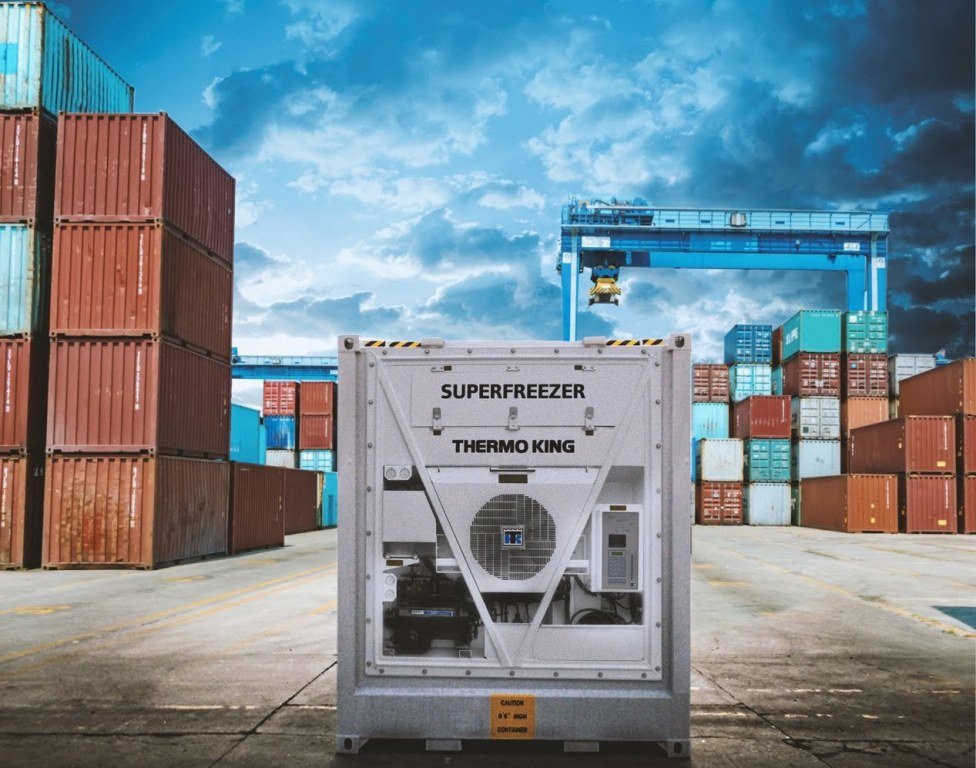India is in the grips of deadly second wave of COVID-19 for nearly a month now and the sharp spike in cases resulting in the state-wise lockdowns has once again put the Indian Logistics Sector under immense stress and pressure. Though unlike 2020, LSPs seem to be well-prepared this time to deal with the crisis with digitalisation and efficient plans and strategies in place. Ritika Arora Bhola reports…
Prepared for the worst?
The emergence of second wave of COVID-19 has made the going difficult for the Indian logistics business stakeholders once again. And the timing could not have been more inopportune; after months of fire fighting last year, the operations were bouncing back to a normal stage. However, having learnt the ropes in terms of sustaining operations even in a crisis hour recently, logistics experts hope that this time the impact is unlikely to be as devastating as in 2020.
Karthi Baskar, Deputy Managing Director, Kintetsu World Express says, “Economic activity in India is suffering due to localised lockdowns but the impact is unlikely to be as devastating as last year. With the fresh wave of Covid-19; cases are sweeping the country and the resultant lockdown measures implemented by several states have already started hurting transporters. The trade is estimated to suffer $2.4 billion (`17,800 crore) of revenue loss in April alone, according to leading transporters. This could also affect GDP growth, which is projected at 10.5 per cent by the central bank for this fiscal year.”
Vipin Vohra, Chairman, Continental Carriers too hopes that this time the industry will manage the crisis more confidently. “We cannot deny that the rising second wave of the pandemic has brought in worries regarding its impact on the logistics industry, with the possibility of several states going under lockdown once again. But with the last year learning and experience, I am sure that supply chain industry will manage this crisis robustly.”
“March 2021 was a good month for the industry and things were looking up. Till the second week of April 2021, situation was favourable. But after that trends turned for the worse,” says CV Kumar, CEO, CCI Logistics adding, “All of us had lowered our guard and now again we need to get back to being more careful and vigilant as the second wave is more virulent and mortality rates are high. The economic recovery from November 2020 onwards gave a lot of hope for the logistics industry, but now the current situation gives a lot of anxiety.”
Jaideep Raha, Managing Director, Jetex Oceanair says many small logistics operators may find it really difficult to stay afloat during this time. “Pay cuts and retrenchment will be rampant and drastic. Revival will take time if there is no adequate support from Govt. to the industry in relaxation on direct and indirect taxes, statutory payments, lenient financial supports from the banking sector is very much need of the hour. Govt. should now look into the social security coverage in general on the paths of UK, US and EU etc. The Govt. should look at rationalising freight rates across board on all modes of transport,” he stresses.
Meanwhile, A M Sikander, Founder and CEO, Sitics Logistic Solutions affirms, “There were lots of green shoots in the last few months after the initial slowdown in the aftermath of the first wave. The industry as such has become more resilient and was adapting well to the new challenges. With the second wave being more severe there could be some turbulence in the market. Food, essential supplies are going to see business as usual although managing the human impact due to covid and transportation for the long haul is a challenge. E-commerce deliveries will get a boost if there are severe restrictions or lockdowns happen as essentials can be ordered online.”
Samir J Shah, Chief Mentor & Director JBS Group of Companies feels players with advanced preparation will continue to score even in these difficult times. “Maersk Shipping Line recently posted its most profitable quarter ever and a large number of MSME logistics companies are gasping for breath. This is driven by systems and ability to adapt – those dependent on solutions finding for every problem will continue facing difficulty.”
Bottlenecks
The crisis has once again put the Indian logistics/transportation industry under a lot of stress. Following the lockdown thousands of migrants/truck drivers have reportedly again moved back to their hometowns fearing unemployment and the well-being of their families.
Borders closure, curtailed manufacturing activities, lesser productivity, restrictions on movement of unessential goods (apparel, consumer durables, machinery, spare parts, etc.) resulted in decline in fleet operations and capacity.
As per the Indian Foundation of Transport Research and Training (IFTRT), a transport tracking research unit, truck rentals plummeted by 18-27 per cent on trunk routes during April 2021 against the rates on a sequential basis in the open market.
“This was mainly because of slump in factory output by 35-40 per cent due to production cuts and closures in many states triggered by the present wave of Covid-19 calamity resulting in local level curfews and lockdowns. Consumer spending for discretionary items had sharply dropped in metro cites – tier 1, 2, and 3 cities,” observes Baskar.
While, Vohra comments, “Due to the local-level restrictions and people staying indoors, there is slow transportation of goods through roadways. Fleet operation has already gone down as the fear of pandemic and lockdown forces truck drivers and labor to return to their hometowns. Lesser production activities, demand and unavailability of drivers and labor will certainly hit the transport sector with the second wave of COVID-19.”
Agreeing with Vohra, Kumar says, “The most worrisome factor is lack of return loads especially in North India. This is causing skewness in vehicle availability and consequently the costs. Continued curfews and curbs might also trigger the migration of drivers’ to their villages, the key player in the entire chain.”
According to Raha, “Lockdown at various cities and towns and the fear amongst the people this time is more. The death rate is higher. In the first wave, we did not see the shortages of O2 cylinders and beds in hospitals. The current situation has affected the morale of the ground level frontline workers severely.”
Sikander speaks no differently when he says, “The sector is expected to contract with the impact of covid. Shortage of drivers, cross border movement and lockdowns in certain highly contagious areas are major challenges. If the manufacturing sector does not slow down and consumption is not impacted, then there would be demand for movement of goods.”
Survival Strategies
2020 was certainly a difficult year for the Indian logistics industry as the drivers were neither prepared for this unprecedented crisis nor they had deployed effective disaster management strategies in their businesses. 100 per cent digitalisation too was also just a distant dream for majority of players. Supply chain was adversely hit during the initial months of 2020 but later gathered pace slowly as the industry drivers united and continued with movement of essential goods, medical equipment, pharmaceuticals, etc. countrywide.
Acknowledging the above, Vohra says, “The logistics and supply chain sector evolved itself by taking all the necessary actions during the last pandemic. Except for the initial hiccups, the supply chain sector continued all its operations last year and I am confident that we will manage this crisis also as our risk management approach is way better this time.”
On a positive note, Baskar says, “The impact on industrial activity during the second wave is smaller in comparison to the devastation witnessed in 2020. Except for those engaged in essential supplies, such as medicines, groceries, and fruits and vegetables, the entire retail sector was battered by the lockdown. Firms are now preparing for the oncoming crisis. The logistics industry is richer from the experience of the first phase of pandemic last year. There is also an effort to automate the entire supply chain, digitise, lessen the paperwork, control costs, manage supply chains and run day-to-day operations with ease.”
“Eternal vigilance is a virtue and that lesson has to be internalised and always practised,” believes Kumar as he adds, “Keeping costs in control would be a key factor. Also there are still niches in the industry, which are not been adequately explored and exploited. As an organisation, CCI is planning to expand to such niche services.”
Raha, on the other hand points out, “Various industry associations must come together and form a core team and represent the government with a SWOT analysis, SOPs to take things forward for the industry. This is the time the industry leaders should come together and do a real-time brainstorming and discuss with appropriate authorities both at the centre and at the state level about the plans ahead.”
For Sikander, following safety protocols, working closely with clients, planning ahead so there are no surprises, training and inclusiveness with people on the ground to give them confidence and ensuring they are protected are things are important to mitigate risks and keep work flowing.
2021 for Logistics
Until few months ago, the industry was hopeful for a smart recovery in the coming months, but with the ongoing crisis, it’s hard to comment on ‘growth’ proposition in 2021 now. The focus at present is to control the crisis and continue with seamless movement of essentials.
None of the industry stakeholders are talking about ‘Profits,’ and at the moment, the year 2021 is again all about keeping ypur heads above the water or surviving. International logistics service providers’ like DHL, DB Schenker, Kuhne+Nagal, etc. can survive, but the medium and small operators are the most affected and agonised.
Raha says, “The present situation is very challenging and tough. This year will be survival of the fittest and of the most prudent minds of the logistics.”
Kumar also shares, “In the current situation all of us are cautiously optimistic. The next couple of months would be an indicator of the things to come.”
“It will all depend on how fast we will recover from the current second wave and how well we are prepared for the third wave that is predicted for later this year. If we can navigate the pit falls quickly, we should make adequate headway to normalisation. Being a crucial component in keeping goods moving across the nation and making sure there is no shortage of supplies for critical items gives opportunities for the sector to do reasonably well under the circumstances,” says Sikander.
On similar lines, Vohra concludes by saying that with the second wave, this year also seems to be full of challenges. “In fact challenges are going to be the new normal of all business. The impact of the new wave is certainly leaving an impact on the logistics sector but with an aggressive approach, I am confident that this sector will stay strong and provide a boost to the Indian Economy.”
Shah feels, “2020 has been a year of testing our ability; resilience and delivery. Logisticians are adaptable and we work in an environment where failure has no place. Delay; mistakes maybe but delivery has to be completed. I’m expecting a lot of innovation and structural changes. Increased ability down the chain is necessary. More and more capacity will have to be created – both executional and infrastructural.”







